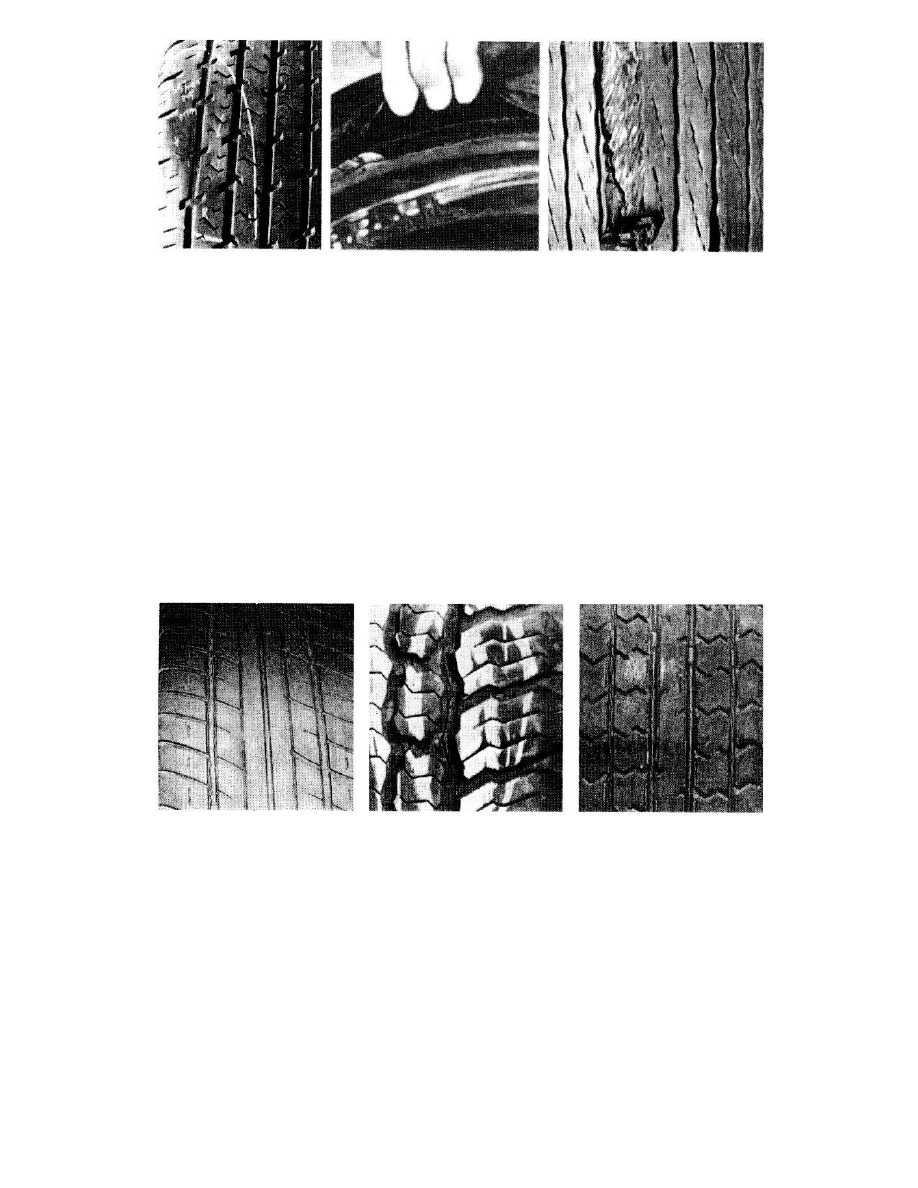Sonata V6-3.0L (1991)

Partial or complete separation between the rubber and the tire cord or between the layers of the tire cord.
Observation(s):
Check for a bulge on the tire shoulder and a longitudinal crack on the bottom of the grooves, possibly accompanied by a break through the rubber
surface. Both are usually accompanied by localized wear in the tread above the separation.
Prevention:
^
Maintain proper inflation pressure
^
Avoid overloading
^
Drive at a moderate speed
^
Avoid sharp cornering
2.
GROOVE CRACKING
Fine longitudinal cracks commonly found in the tread groove base. These cracks do not penetrate into the cord material of the tire. If the tire continues to
be used in this condition, the cracks may join together and may sometimes extend as far as the carcass. Cracking growth is also increased in underinflated
tire conditions.
Observation(s):
Check other tires on the vehicle for this condition. If there are only one or two cracks in the tire groove or if the crack continues up the side of the groove
wall, the cause of the crack is a cut inflicted by a road hazard condition and in that case, the tire is not warrantable.
Prevention:
^
Maintain proper inflation pressure
^
Avoid overloading
^
Remove stone pick-up in the tread grooves
3.
SIDEWALL SEPARATION
